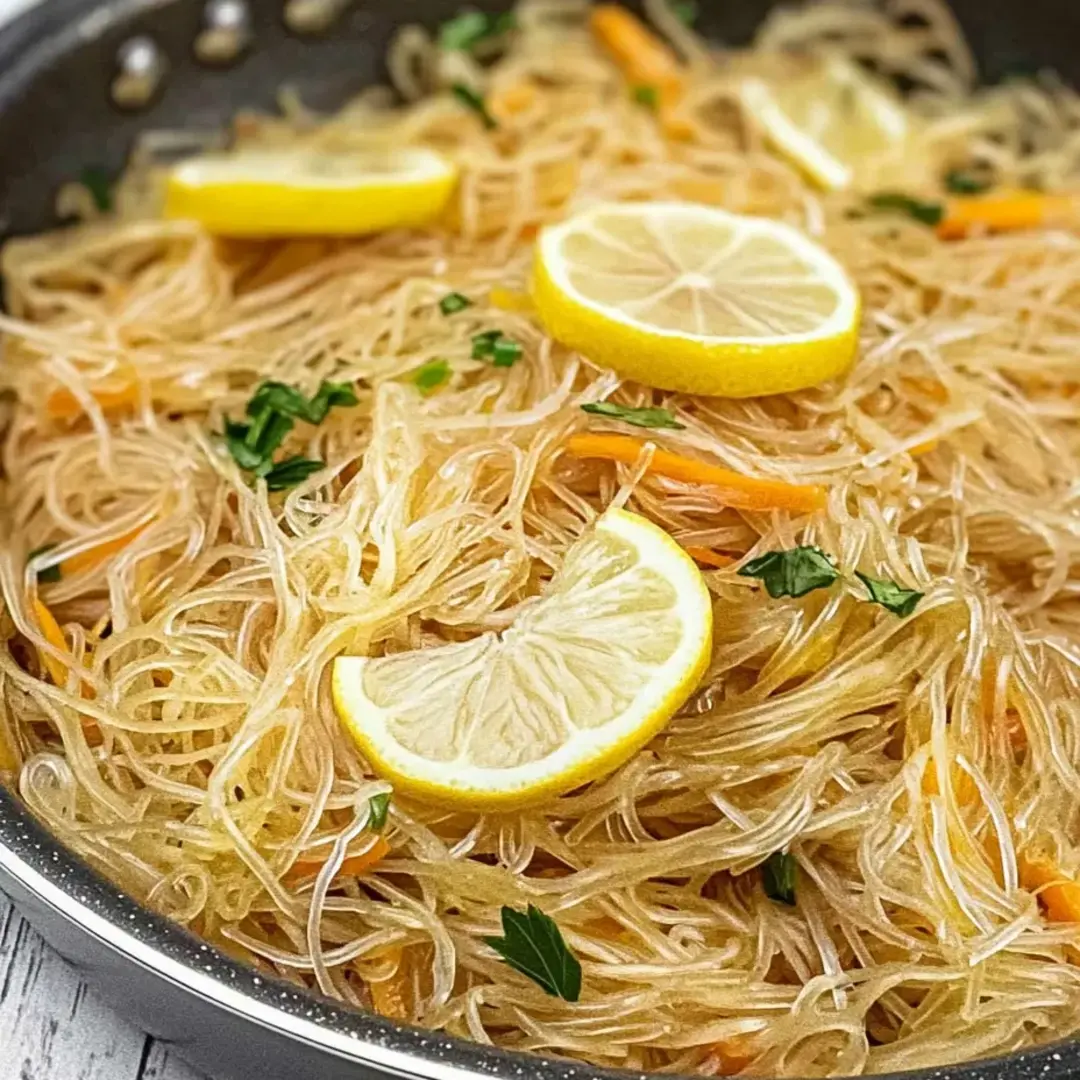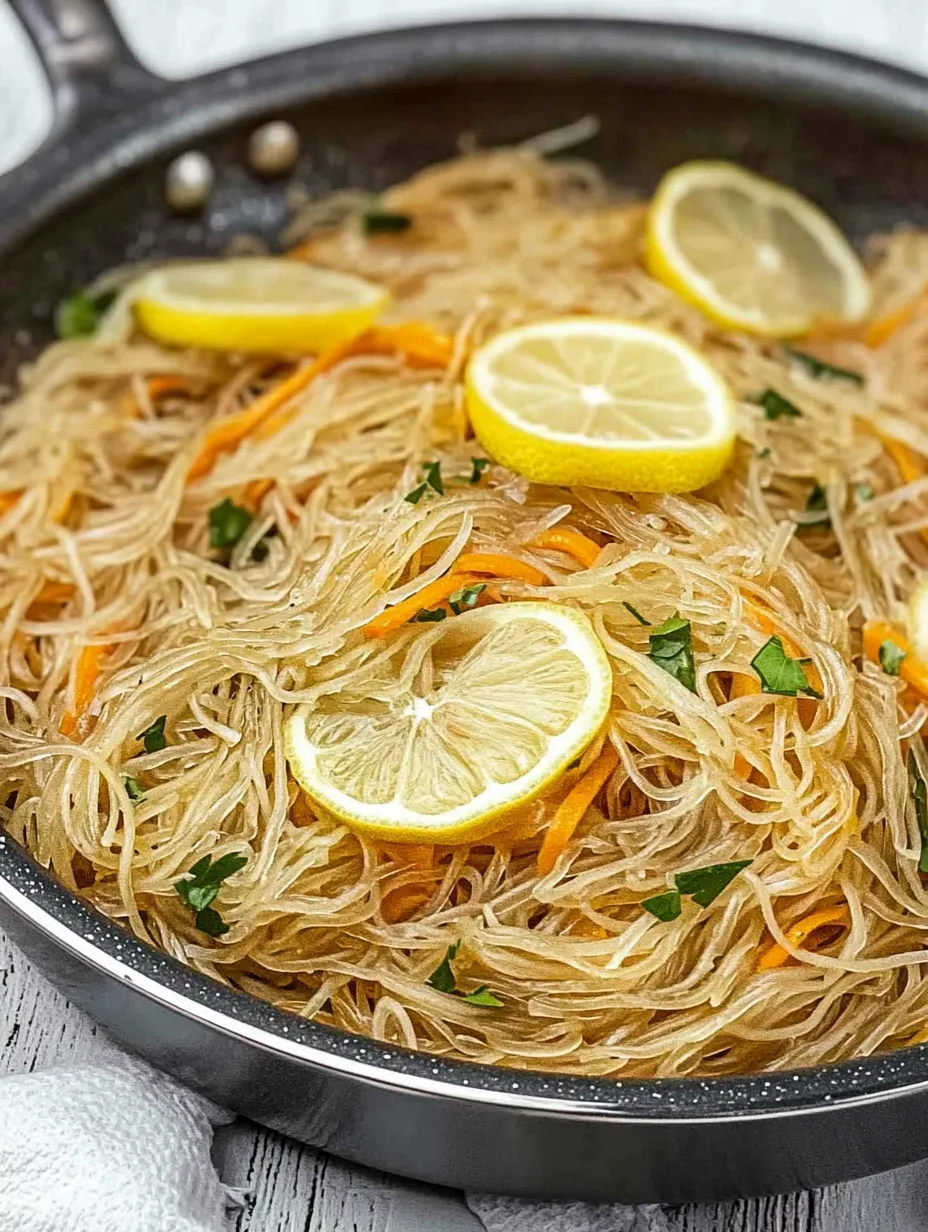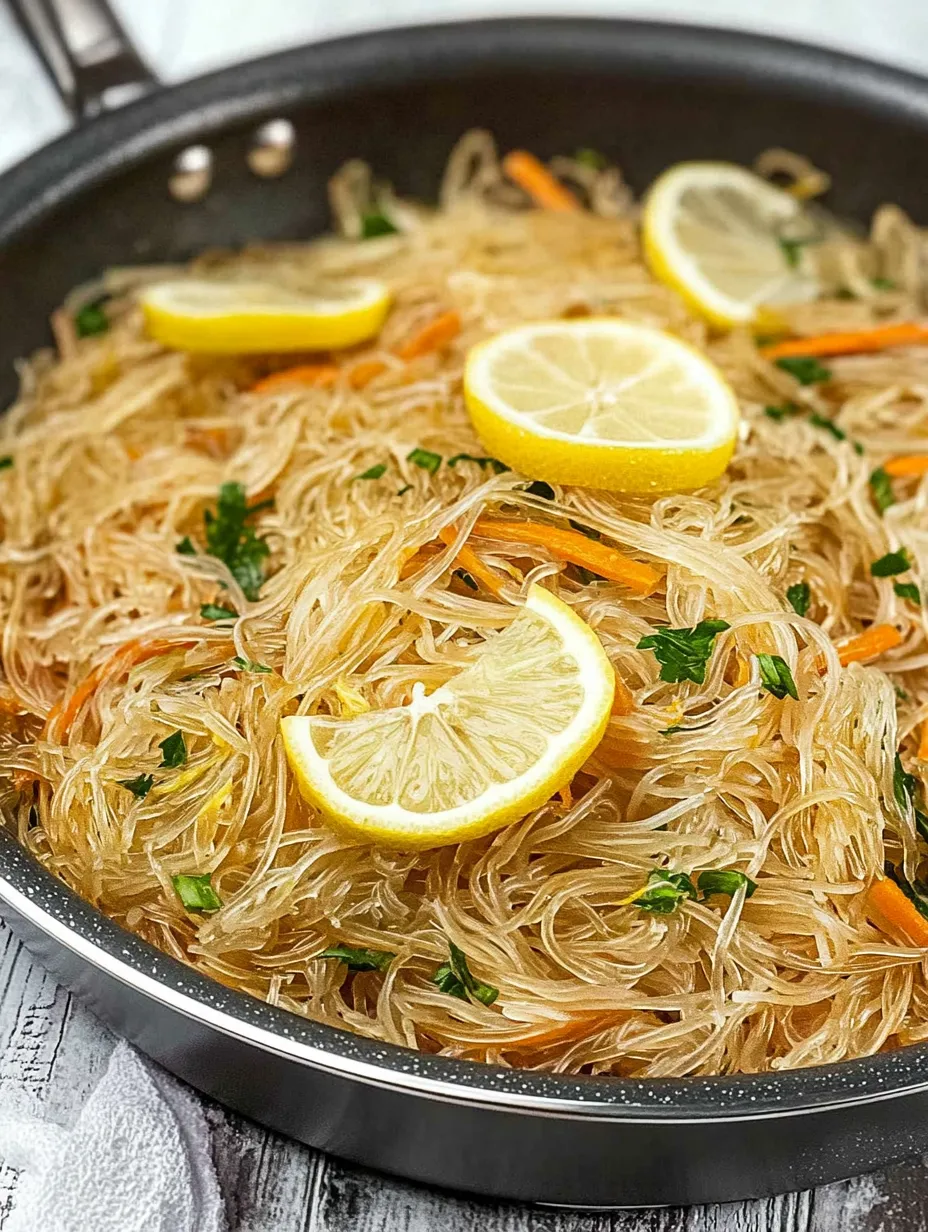 Pin it
Pin it
This vibrant Filipino Pancit brings together delicate rice noodles, tender chicken, and crisp vegetables in a savory sauce that's both comforting and exciting. A beloved staple in Filipino cuisine, Pancit is traditionally served at celebrations and special gatherings, but it's simple enough to enjoy any night of the week. The combination of textures and flavors – from the silky noodles to the crunchy vegetables and umami-rich sauce – creates a harmonious dish that's guaranteed to become a family favorite. Best of all, this one-pan meal comes together quickly once your ingredients are prepped, making it perfect for busy weeknights or impressive enough for weekend entertaining.
The first time I made this pancit for friends, they couldn't believe how much flavor was packed into such a simple dish! My neighbor, who had never tried Filipino cuisine before, immediately asked for the recipe and now makes it regularly for her family. What I love most about sharing this dish is watching people's reactions to that perfect balance of savory sauce, tender noodles, and fresh vegetables – it's comfort food with a twist that appeals to almost everyone.
Ingredients
- 8 ounces thin rice noodles (rice vermicelli): These delicate noodles are the foundation of the dish and soak up all the delicious flavors
- 2 tablespoons vegetable oil: For sautéing; can substitute with canola or peanut oil for different flavor profiles
- 1 large onion, thinly sliced: Provides sweetness and aromatic base for the dish
- 3 cloves garlic, minced: Essential for that punch of flavor that defines Filipino cuisine
- 1 medium carrot, julienned: Adds color, texture, and subtle sweetness
- ½ small cabbage, shredded: Gives wonderful texture and slight crunch, plus stretches the dish to feed more people
- ½ cup snow peas, trimmed: Provides vibrant color and crisp-tender texture
- 1 cup cooked chicken, shredded: Adds protein; rotisserie chicken works perfectly for convenience
- ¼ cup low-sodium soy sauce: Creates the savory base of the sauce; use tamari for gluten-free option
- 2 tablespoons oyster sauce: Adds rich umami depth and slight sweetness
- ½ teaspoon ground black pepper: Balances the flavors with a touch of warmth
- 2 cups low-sodium chicken broth: Helps cook the noodles and creates the perfect sauce consistency
- Lemon wedges for serving: The traditional acidic finish that brightens all the flavors
- Fresh cilantro or green onions, chopped: For garnish, adding freshness and color
 Pin it
Pin it
Step-by-Step Instructions
- Prepare the noodles:
- Place the rice noodles in a large bowl and cover with warm water. Let them soak for about 10 minutes, or until they begin to soften but still maintain some firmness. They'll finish cooking in the pan later. Drain and set aside. This pre-soaking step is crucial – it ensures your noodles will be perfectly tender, not mushy.
- Sauté the aromatics:
- Heat the vegetable oil in a large wok or deep skillet over medium heat. Add the sliced onion and minced garlic, sautéing for 2-3 minutes until the onion becomes translucent and aromatic. Don't rush this step – these aromatics build the foundation of flavor for your pancit.
- Add the vegetables:
- Increase the heat to medium-high and add the julienned carrots, shredded cabbage, and trimmed snow peas to the wok. Stir-fry for 3-4 minutes until the vegetables begin to soften but still maintain some crispness. The high heat ensures your vegetables stay vibrant and don't become soggy.
- Incorporate the chicken:
- Add the shredded cooked chicken to the vegetable mixture. Stir-fry for another 2 minutes, allowing the chicken to warm through and begin absorbing the flavors of the vegetables and aromatics.
- Create the sauce:
- Pour in the soy sauce, oyster sauce, and black pepper. Stir everything together to coat the vegetables and chicken evenly with the seasonings. The combination of these sauces creates that distinctive, savory flavor that makes pancit so irresistible.
- Combine with noodles:
- Pour the chicken broth into the wok and bring it to a simmer. Add the drained rice noodles to the mixture and gently toss everything together. The noodles will begin absorbing the flavorful broth as you continue cooking.
- Finish cooking:
- Continue to stir and toss the pancit for another 3-5 minutes until the noodles are fully cooked and have absorbed most of the liquid. You'll know they're ready when they're tender but still have a slight bite to them, and the sauce has thickened enough to lightly coat everything.
- Serve with flair:
- Transfer the finished pancit to a large serving platter. Garnish generously with chopped fresh cilantro or green onions and arrange lemon wedges around the edge of the dish. In Filipino tradition, guests squeeze fresh lemon juice over their portion just before eating.
Making Perfect Pancit Every Time
The beauty of pancit lies in its simplicity, but a few key techniques make the difference between good pancit and great pancit:
First, don't skip the soaking step for your noodles. Unlike Italian pasta, rice noodles don't need to be boiled – they just need a good soak in warm water to begin softening. This prevents them from becoming mushy when added to the stir-fry.
Second, maintain high heat while cooking the vegetables. This quick-cooking method preserves their bright colors and crisp textures, creating that perfect contrast with the soft noodles.
Lastly, allow the noodles to absorb the sauce gradually. When you first add them to the pan, the mixture might look soupy, but have patience – those noodles are thirsty and will soak up all that flavorful broth, resulting in perfectly seasoned bites.
 Pin it
Pin it
Customization Options
One of the reasons pancit is beloved in Filipino homes is its adaptability. Here are some delicious variations to try:
- Protein options: Substitute shrimp, thinly sliced pork, or tofu for the chicken
- Vegetable variations: Add bell peppers, green beans, bok choy, or bean sprouts
- Seafood pancit: Include a mix of shrimp, squid, and mussels for a coastal version
- Spicy kick: Add sliced Thai chilies or a dash of sriracha for heat
- Citrus boost: Mix in some calamansi juice (or lime if calamansi isn't available) for an authentic Filipino twist
Make-Ahead and Storage Tips
Pancit is one of those rare dishes that often tastes even better the next day, making it perfect for meal prep:
- Store leftovers in an airtight container in the refrigerator for up to 3 days
- Reheat gently in a skillet with a splash of water or broth to refresh the noodles
- For best texture, don't freeze pancit – the noodles can become mushy when thawed
I first learned to make pancit from my Filipino neighbor when I moved into a new apartment building years ago. She insisted that proper pancit required "tender hands" – a gentle touch when tossing the noodles with the other ingredients. At first, I was skeptical about such a simple dish with so few ingredients, but after that first bite, I understood why this humble noodle dish holds such an important place in Filipino celebrations. Now I make it whenever I need a comforting meal that still feels special.
My final thought on pancit is that it's the perfect introduction to Filipino cuisine for anyone unfamiliar with these flavors. The familiar components of noodles, vegetables, and chicken make it approachable, while the distinctive sauce provides that authentic taste of the Philippines. Whether you're cooking for a special occasion or simply looking for a satisfying weeknight dinner, this pancit recipe delivers comfort and excitement in every bite.
Frequently Asked Questions
- → What type of noodles are traditionally used in Pancit?
- Traditional Filipino Pancit uses rice noodles called 'bihon' (thin rice vermicelli) or 'canton' (egg noodles). Some regional versions use a combination of both. This recipe uses rice noodles, but you can substitute with egg noodles or even use a combination of both for different textures.
- → Can I make Pancit vegetarian or vegan?
- Absolutely! You can easily make vegetarian Pancit by omitting the chicken and using vegetable broth instead of chicken broth. For a vegan version, also replace the oyster sauce with vegetarian mushroom sauce or additional soy sauce with a touch of sugar. Add extra vegetables or tofu for protein.
- → What protein options work well in Pancit besides chicken?
- Pancit is very versatile! You can use pork, beef, shrimp, or even Chinese sausage (lap cheong) as alternatives to chicken. Tofu or tempeh work well for plant-based options. In the Philippines, a combination of proteins is often used depending on what's available.
- → Is Pancit gluten-free?
- This recipe isn't gluten-free as written because of the soy sauce and oyster sauce. However, you can easily make it gluten-free by substituting tamari or gluten-free soy sauce and a gluten-free oyster sauce alternative. The rice noodles themselves are naturally gluten-free.
- → How do I store and reheat leftover Pancit?
- Store leftover Pancit in an airtight container in the refrigerator for up to 3 days. To reheat, add a splash of water or broth to prevent drying out, then warm in a skillet over medium heat while tossing gently. You can also microwave it, but the stovetop method gives better texture. Pancit actually tastes great the next day as the flavors have more time to meld together!
